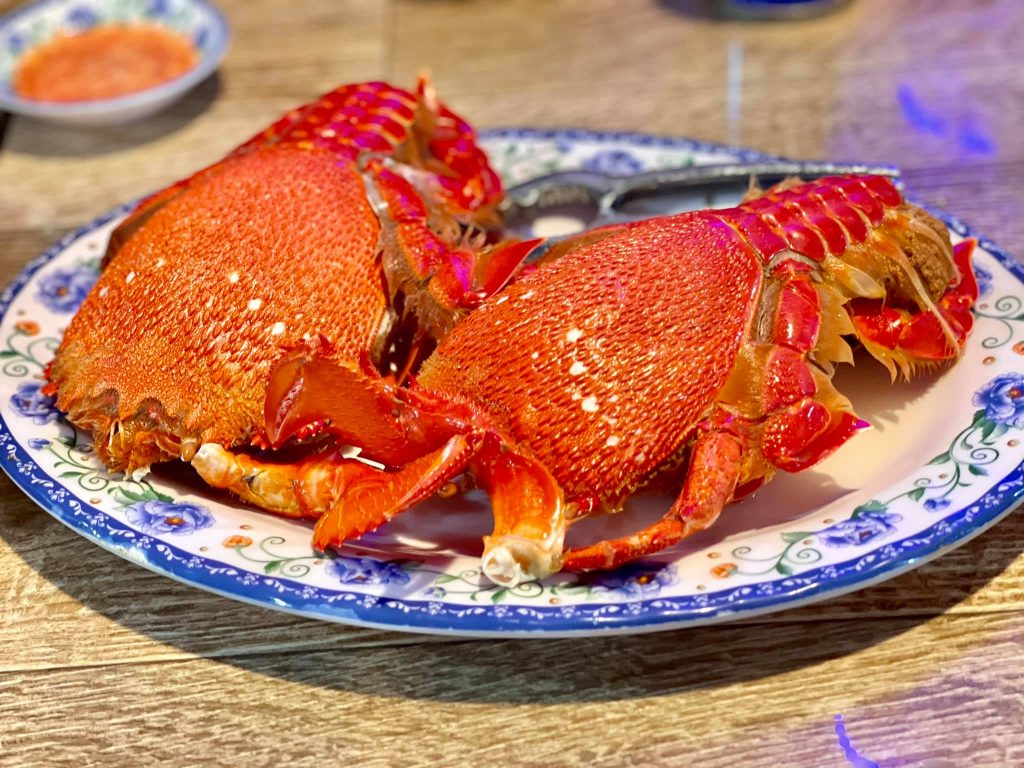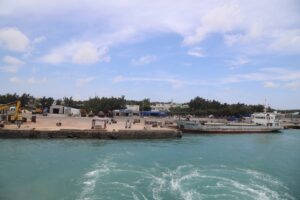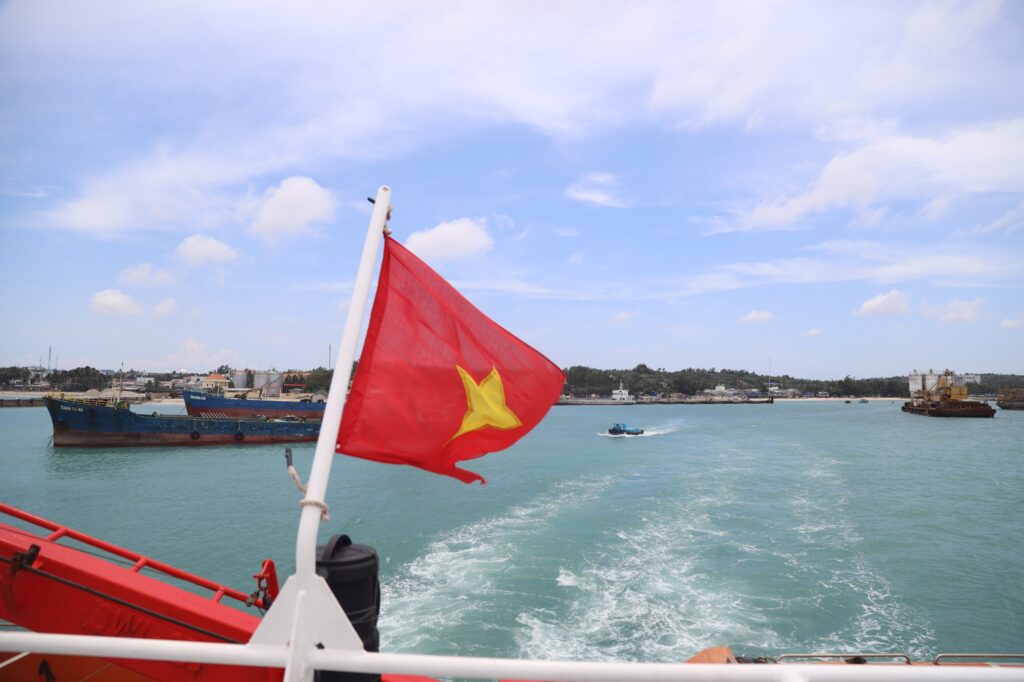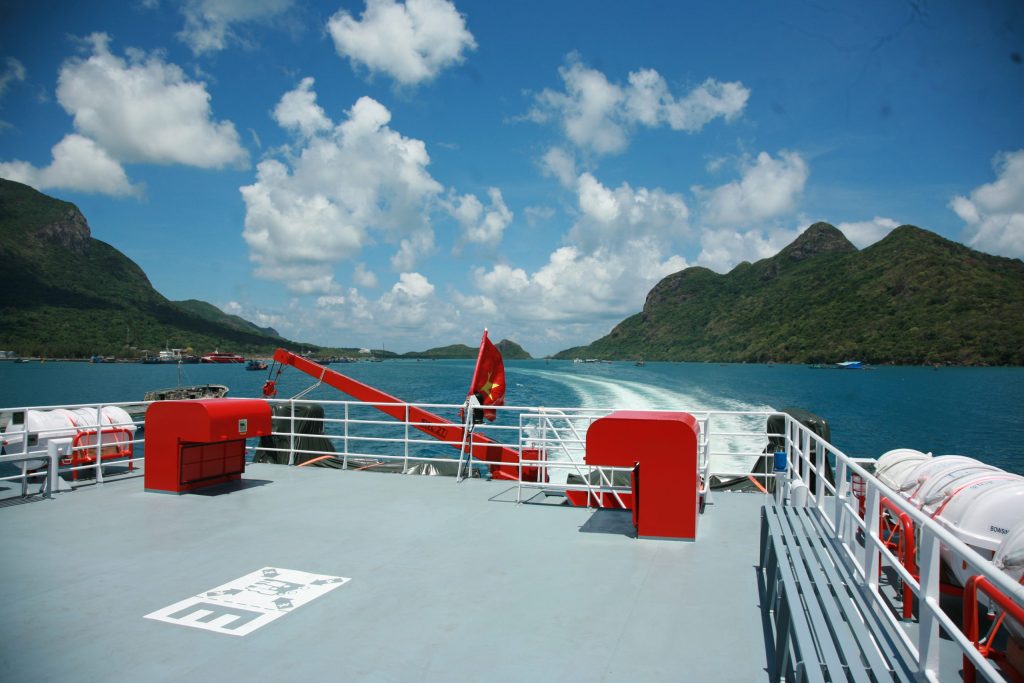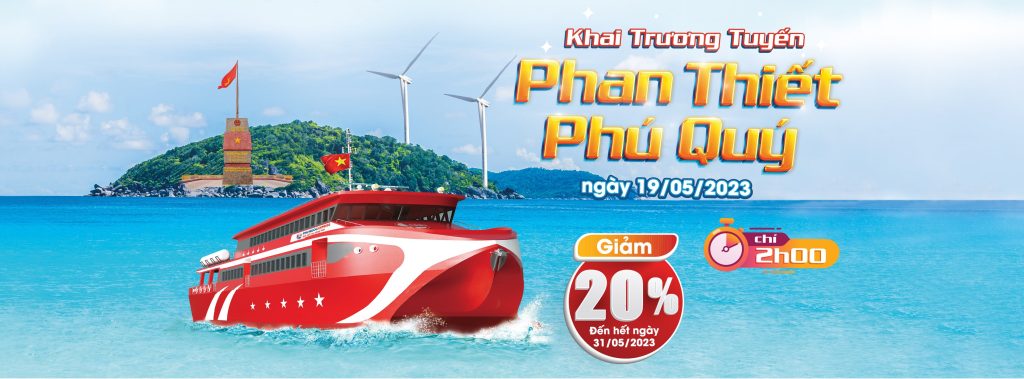Huỳnh Đế crab (also known as “king crab”) is one of the most prized and luxurious seafood specialties on Phú Quý Island, Bình Thuận Province. According to local fishermen, the abundance of this crab in the region is due to the golden sandy seabed and the island’s clean, clear waters, which create the perfect habitat for them.
Compared to other crab species, Huỳnh Đế crabs are clever and masters of camouflage. With their distinctive appearance—bristled shell, spiny back, short claws, and hairy neck and tail—they easily blend into coral reefs to hunt or hide from predators. Catching these crabs is no easy feat and requires skill, patience, and experience. Fishermen use nets, diving techniques, or a special trap called a rập—a cone-shaped device baited with fresh food. These traps are dropped about 5 meters apart. When the crab enters to eat the bait, it becomes trapped inside.
The Huỳnh Đế crab earned its royal name from a legend: when Emperor Gia Long visited the central islands and stopped at Hòn Tranh (a small island near Phú Quý), local fishermen offered him this rare delicacy. The crab’s invigorating flavor impressed the emperor, who felt revitalized after eating it. Since then, islanders have referred to it as “Huỳnh Đế” crab, meaning “Imperial Crab,” and see it as a symbol of luck and prosperity.
During crab season, fishing boats return in the late afternoon loaded with large, palm-sized crabs, their claws twitching as they crawl around. To ensure the meat stays sweet, firm, and rich with bright orange roe, the crabs must be kept alive until cooking.
Huỳnh Đế crab meat is considered a “champion” in both flavor and nutrition, once reserved exclusively for emperors. It can be stir-fried with tamarind or salt, grilled, steamed, or added to congee. Its rich aroma and taste make it especially nourishing: it is believed to boost male vitality and strengthen women’s health, particularly for nursing mothers.
The crab’s dense, high-protein meat makes it ideal for a wide range of dishes, but its signature preparation is in crab congee. The roe and meat are added to a pot of smooth rice porridge, creating an exceptionally sweet and fragrant dish. Due to its high protein content, people with gout are advised to avoid it, as it may trigger flare-ups.
When islanders gift Huỳnh Đế crab to visiting guests, it signifies high honor. Perhaps the best way to enjoy it is simply steamed, then dipped in salt, pepper, and bird’s eye chili. As you crack open the shell, the creamy, aromatic roe entices your senses. The firm, sweet, and succulent white meat practically demands to be tasted right away.
Unfortunately, due to overfishing, this once-common delicacy has become rarer. Today, Huỳnh Đế crab fetches between 700,000 to 800,000 VND per kilogram, and seafood buyers purchase them in unlimited quantities.
Missing out on this “king of crabs” during a visit to Phú Quý would truly be a shame. Once you’ve tasted Huỳnh Đế crab, you’re sure to crave it again. Don’t leave Phú Quý Island without trying this extraordinary seafood treasure.



